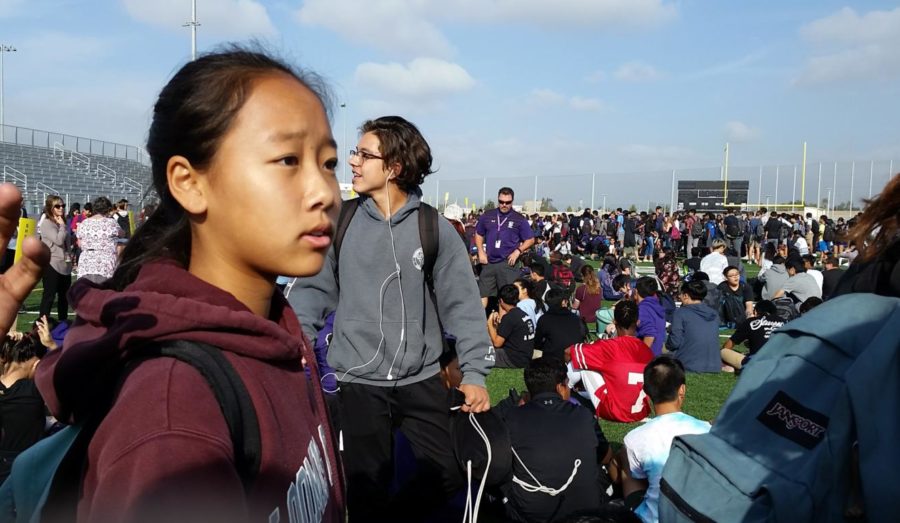Duck and Cover! The Great California ShakeOut
Sophomore Chris Choung lines up with other students on the field as teachers call role during the ShakeOut drill.
Students evacuated their classrooms in a state-wide earthquake drill called The Great California ShakeOut last Thursday.
The ShakeOut is an annual earthquake drill held on Oct. 19, which reminds people how to protect themselves during an earthquake.
“For our first drill, I thought it went well,” Assistant Principal Kris Linville said. “We were pretty much prepared for everything out there. Teachers knew what time it was going to start and what time it was going to end. The next level of the drill would be to throw in a couple more surprises and maybe not tell them [teachers] what time it is going to happen…[Right now,]we are ready for the drill level, but for us it’s what happens when we don’t know the next steps.”
According to the United States Geological Survey (USGS), California has about 10,000 earthquakes every year. People usually cannot feel these smaller earthquakes, yet there are several moderate size (5.5 magnitude or greater) earthquakes each year that can happen at any time.
“At home, you have to be prepared for an earthquake by having an emergency supply kit and making sure there is enough water and dry foods for everyone so that you have the right equipment and supplies,” sophomore Samira Feili said. “My family and I have an emergency kit, so with that, we feel prepared with our supplies.”
Many anticipate the “Big One,” a hypothetical earthquake of a magnitude 8 or higher along the San Andreas Fault, as a large earthquake along this fault line is long overdue, with the most recent being the 1989 Loma Prieta Earthquake.
Irvine is roughly two hours west of the fault line. According to a simulation of the predicted “Big One” by the Southern California Earthquake Center, Irvine will receive a great deal of shockwaves from the fault line.
“After the drill, I will go online and do research to see if there are any emergency kits that I can make that are easy,” sophomore Priscilla Hui said.
Prepare for an earthquake by storing critical documents and supplies ready-to-go, fasten any loose items that can fall in your house (such as bookshelves), create a family emergency plan and practice “Drop, Cover, and Hold On!” For the full list of ways prepare, visit ready.gov/earthquakes.
Your donation will support the student journalists of Portola High School. Your contribution will allow us to purchase equipment and cover our annual website hosting costs.

Maya Sabbaghian is one of two 2019-2020 Managing Editors. A staff member since 2016, Maya has previously served as a 2017-2018 Editor-in-Chief, and as...




